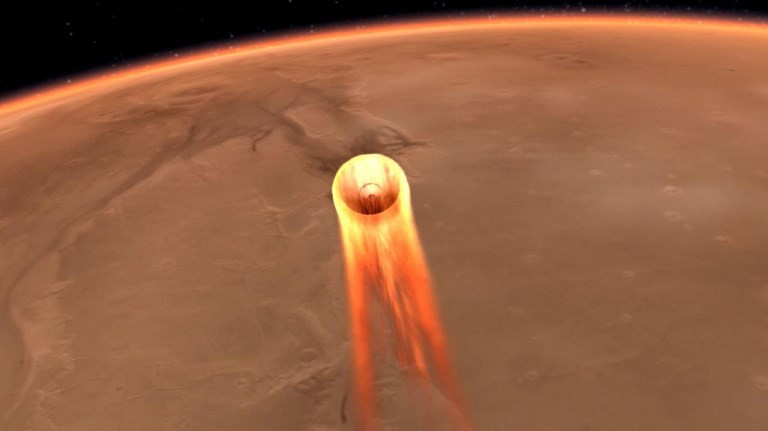Popular Reads
Top Results
Can't find what you're looking for?
View all search resultsPopular Reads
Top Results
Can't find what you're looking for?
View all search resultsNASA, Pentagon developing nuclear-powered rocket for Mars voyage
NASA Administrator Bill Nelson said Tuesday that the US space agency will team up with the Defense Advanced Research Projects Agency (DARPA) to "develop and demonstrate advanced nuclear thermal propulsion technology as soon as 2027."
Change text size
Gift Premium Articles
to Anyone
 This artist's impression obtained from NASA shows InSight's entry, descent and landing at Mars. NASA is counting down to a nail-biting touchdown on Nov. 26, 2018, of the $993 million Mars InSight, the first spacecraft to listen for quakes and study the inner workings of another rocky planet. (Agence France Presse/Handout/NASA)
This artist's impression obtained from NASA shows InSight's entry, descent and landing at Mars. NASA is counting down to a nail-biting touchdown on Nov. 26, 2018, of the $993 million Mars InSight, the first spacecraft to listen for quakes and study the inner workings of another rocky planet. (Agence France Presse/Handout/NASA)
N
ASA is partnering with a Pentagon research agency to develop a nuclear-powered rocket engine in preparation for sending astronauts to Mars.
NASA Administrator Bill Nelson said Tuesday that the US space agency will team up with the Defense Advanced Research Projects Agency (DARPA) to "develop and demonstrate advanced nuclear thermal propulsion technology as soon as 2027."
"With the help of this new technology, astronauts could journey to and from deep space faster than ever –- a major capability to prepare for crewed missions to Mars," Nelson said in a statement.
DARPA is the Pentagon's research and development arm and has played a role in many of the notable innovations of the 20th century including the internet.
NASA said nuclear thermal rockets can be three or more times more efficient than conventional chemical propulsion and would reduce transit time, essential for an eventual mission to Mars.
In a nuclear thermal engine, a fission reactor is used to generate extremely high temperatures.
Heat from the reactor is transferred to liquid propellant which is then converted into gas, which expands through a nozzle and provides thrust.
"DARPA and NASA have a long history of fruitful collaboration," DARPA director Stefanie Tompkins said, citing the Saturn V rocket that took the first astronauts to the Moon.
"The nuclear thermal rocket program will be essential for more efficiently and quickly transporting material to the Moon and, eventually, people to Mars," Tompkins said.
NASA conducted its last nuclear thermal rocket engine tests more than 50 years ago but the program was abandoned due to budget cuts and Cold War tensions.










